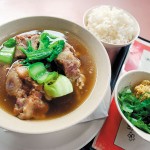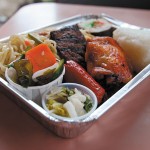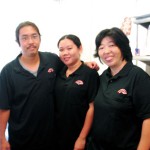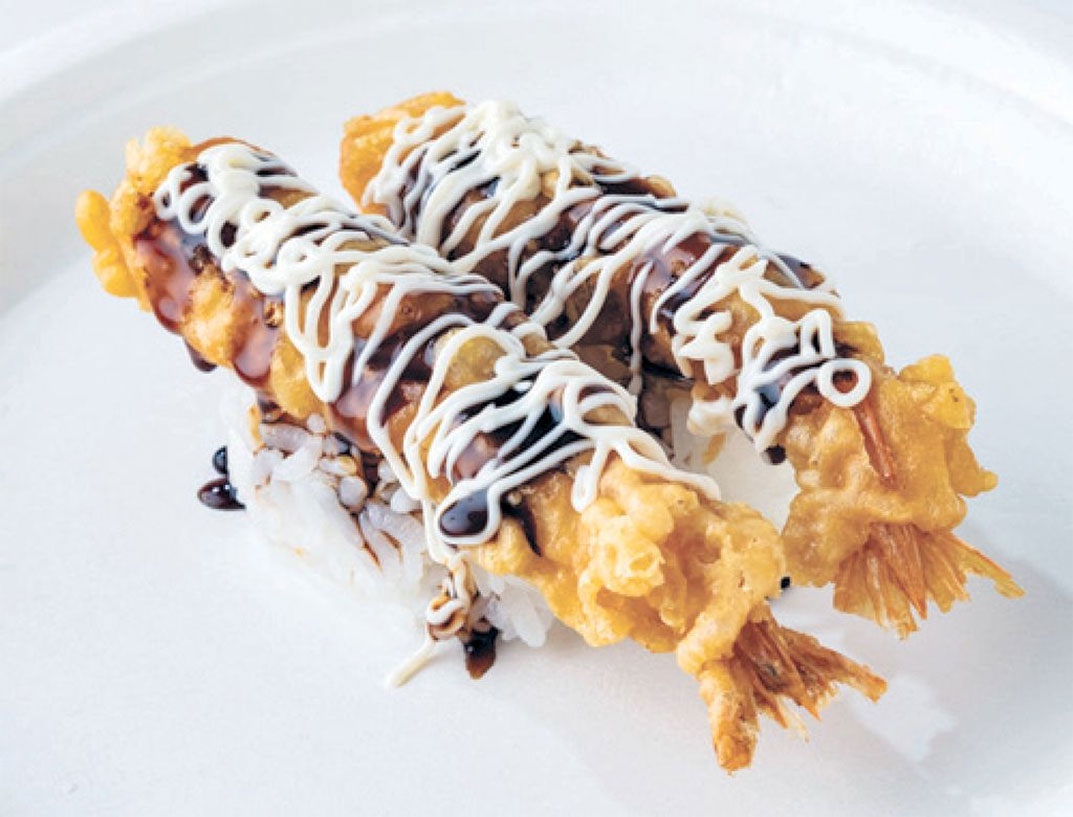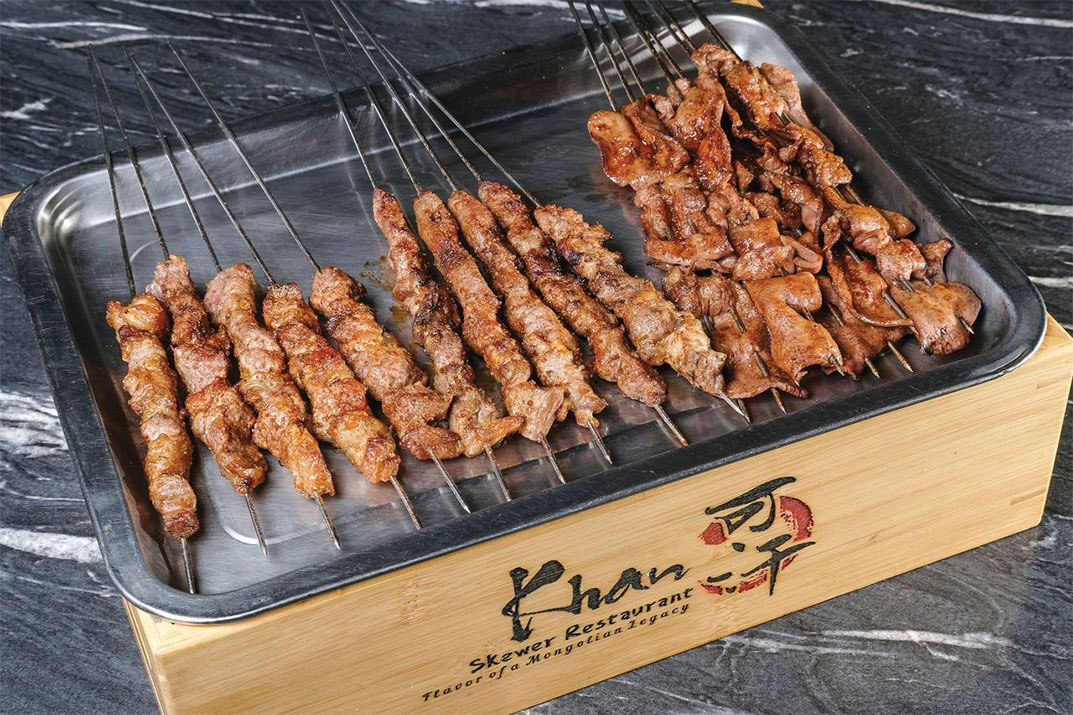Sekiya’s
Features Inside FeatureJanuary 2, 2011
Story By: Dining Out Team |
If you’re superstitious about getting the New Year off to a healthy and prosperous start, you might want to head to Sekiya’s Restaurant and Delicatessen where kuromame is being served today until it runs out. The traditional Japanese dish of black beans boiled in sweet water with chestnuts then simmered for hours has long been a holiday staple at Sekiya’s.
 Sekiya's oxtail soup is proclaimed by many to be the best in town.
Sekiya's oxtail soup is proclaimed by many to be the best in town. At the Sekiya deli, specialties include gobo, hash tempura, shrimp tempura, cone sushi, fried chicken and namasu.
At the Sekiya deli, specialties include gobo, hash tempura, shrimp tempura, cone sushi, fried chicken and namasu. At the Sekiya deli, specialties include gobo, hash tempura, shrimp tempura, cone sushi, fried chicken and namasu.
At the Sekiya deli, specialties include gobo, hash tempura, shrimp tempura, cone sushi, fried chicken and namasu. Bento selections come with fried chicken, namasu, noodles, sushi, teri beef and hot dog.
Bento selections come with fried chicken, namasu, noodles, sushi, teri beef and hot dog. At the deli counter are Lance Mita, Gemma Imamura and owner Joy Morihara.
At the deli counter are Lance Mita, Gemma Imamura and owner Joy Morihara.
“We’ve been making it for decades,” says owner Joy Morihara. “I believe that we have one of the best-tasting kuromame on the island, and our customers seem to think so too.” You can order kuromame as a side dish for a few dollars , or by the pound for $19, but you’d better hurry if you want a taste of the delicacy this year – supplies are limited.
“We cook the beans all day long, and they have a really good, sweet flavor,” says Morihara. “But once they’re gone we can’t make any more. We only have a limited supply of beans. When we run out of this batch we’re done.”
There are plenty of other reasons to stop by Sekiya’s, including sampling traditional favorites such as ozoni and mochi. The 75-year-old restaurant has been making these, and dozens of other popular dishes since opening as a small okazuya in 1935.
“My grandparents just made the kind of food that they liked to eat and shared it with everyone,” Morihara says. “And the store gradually grew from a simple okazuya to a full restaurant.”
The fact that Sekiya’s is still going strong 75 years later is a testament to the dedication of the family. “I don’t think our grandparents thought about the restaurant continuing through generations. They just put their heads down and worked through it,” Morihara says. Today, it’s the consistency of family-favorite dishes that keeps lines at the deli long and the restaurant busy, particularly on rainy, cool days.
“A lot of the recipes are basically the same as they were in my grandmother’s day,” Morihara says. “The sukiyaki, the teriyaki, the saimin… nothing has really changed. I think people like the consistency and the home cooking, the fact that nothing is frozen. And maybe the fact that it really is the kind of food your grandmother would cook for you.”
It’s also the kind of food that you might crave, but never attempt to cook at home. Dishes like Ozoni ($6.95), Abekawa Mochi ($5.95), Sukiyaki Udon ($14.55), Nitsuke Butterfish ($15.55) and Beef Tomato ($10.45) are all house specialties. Sekiya’s Oxtail soup ($12.75) is one of the restaurant’s biggest attractions. “People come for the saimin; its probably the most widely served dish, and then the oxtail soup is next,” Morihara says.
No one at Sekiya’s is really sure what makes the soup so popular. “We don’t know,” laughs Morihara, who admits that while the recipe is a closely guarded secret, it’s not one that the loyal customers request much. “We don’t really get people asking for the secret,” she says, “because I don’t think people have the time to make it. The oxtail is so tender and the soup is very flavorful, but people just don’t have the time to make these kinds of dishes at home. That’s why they come here.”
Customers come from Waimanalo and Mililani, and some of them come every day. “We see the same people ordering the same food every day,” says Morihara, who admits that, at the deli counter, dozens of customers don’t even need to order. “The staff just asks them if they want the same as usual, and they say yes.”
A Combination Special ($14.95) that features a choice of two entrees including ahi tempura, mahimahi, beef teriyaki, fried ahi, yakitori chicken, fried oysters, marinated fried chicken, nitsuke butterfish, tonkatsu — each plate comes with rice, miso soup, tsukemono and tea — offers an easy way to order if you’re going for the first time. “It’s good when people can’t decide what to eat,” says Morihara.
At the entrance to the restaurant, a busy deli counter offers dishes that are found in only a handful of Japanese-style delis scattered around the islands: potato mac salad, fried chicken, sushi selections, char sui, chow funn, hot dogs, nishime, butterfish belly, namasu, gobo and fried noodles are just a few of the dozens of deli selections. Cone sushi and hash tempura may be two of the best-selling items served from 8 a.m. – 4:30 p.m. daily.
In a city where mom-and-pop restaurants are disappearing as fast as chain restaurants are spreading, the family-owned operation known as Sekiya’sremains. So what makes the restaurant have such long-lasting power?
“It’s some luck, some good food,” Morihara explains, “and a lot of very loyal customers for whom we are very grateful.”
Sekiya’s Restaurant and Delicatessen
- Where
- 2746 Kaimuki Avenue
- Honolulu, HI 96816
- Call
- (808) 732-1656
- Website





